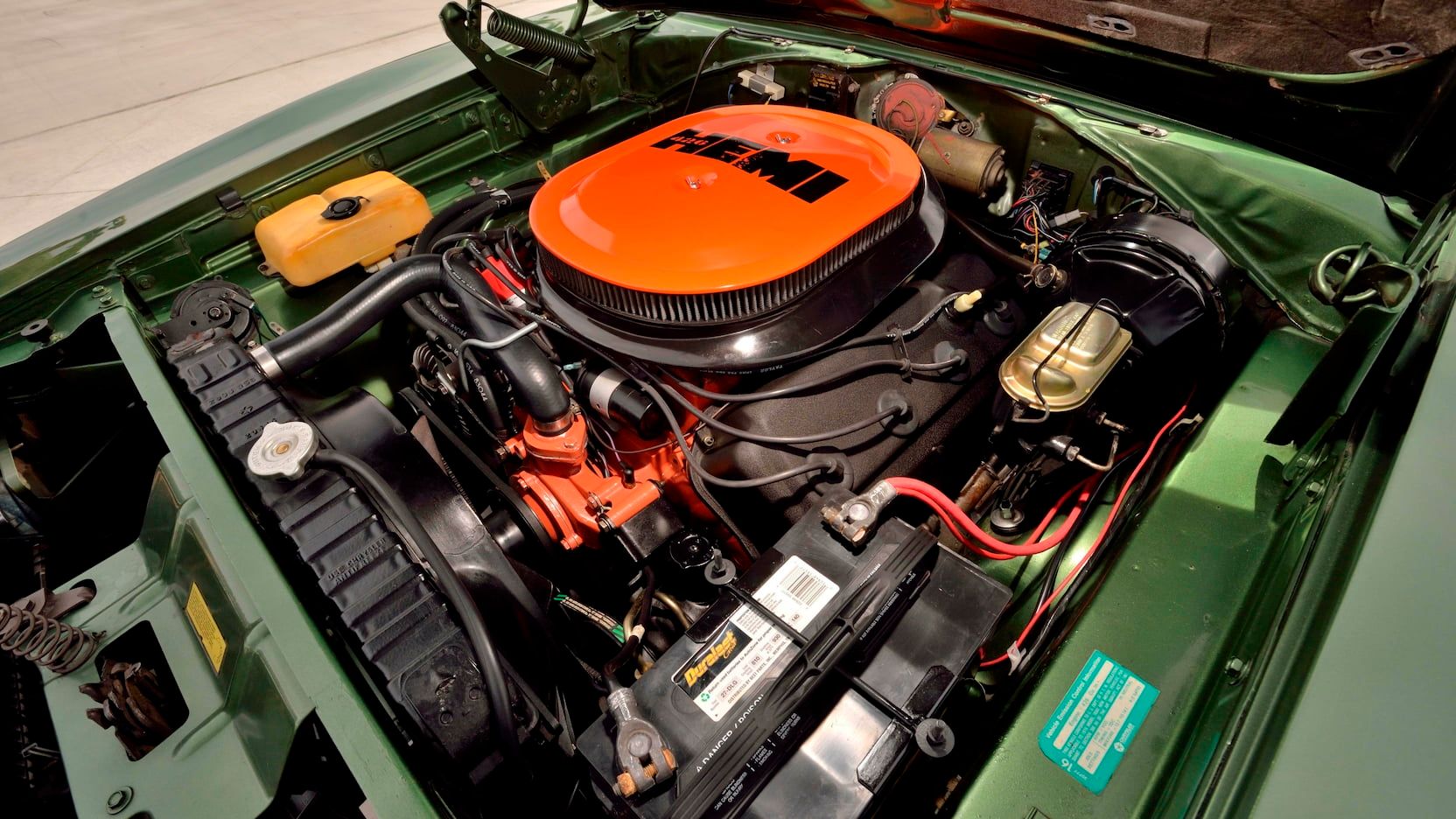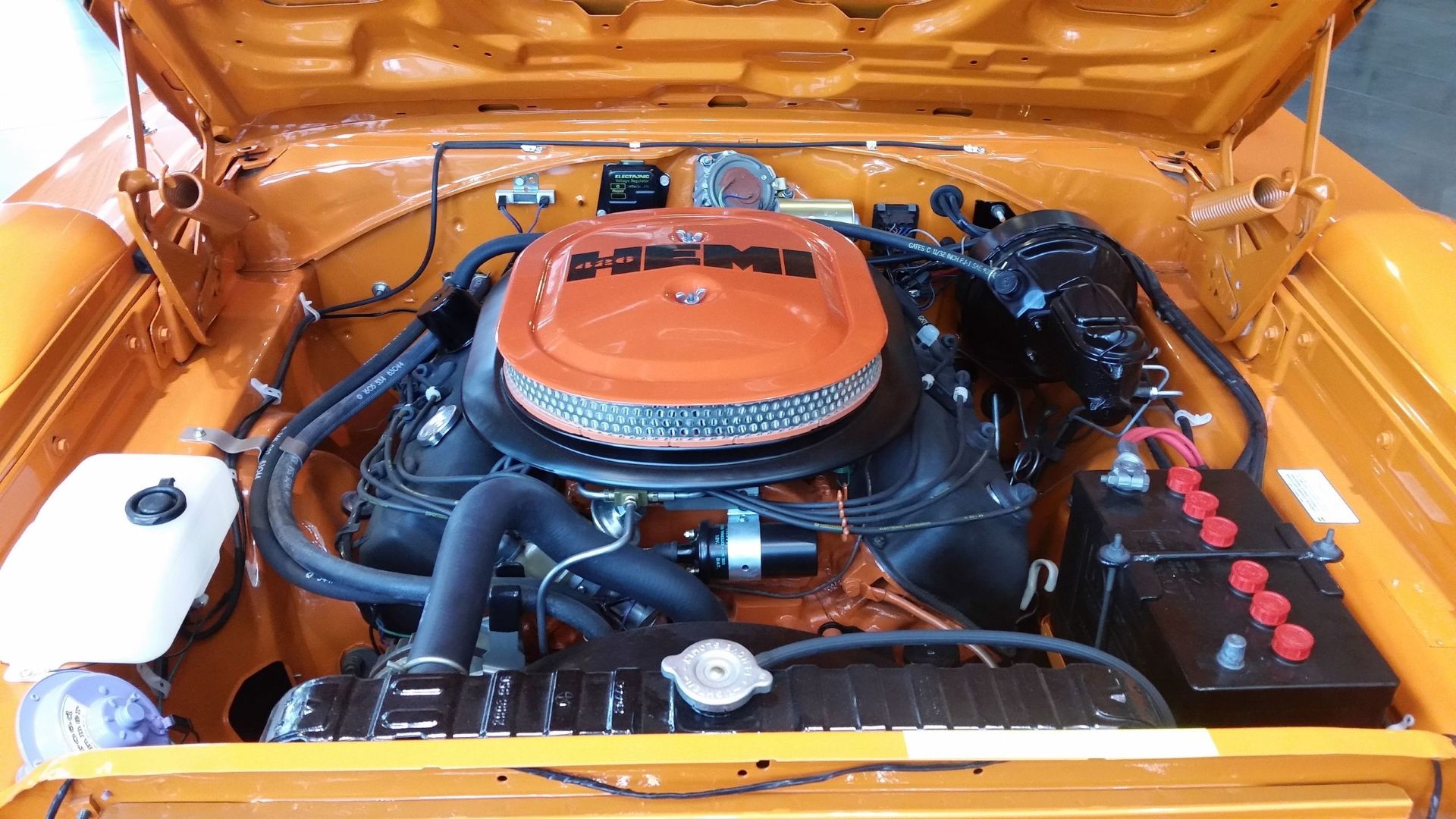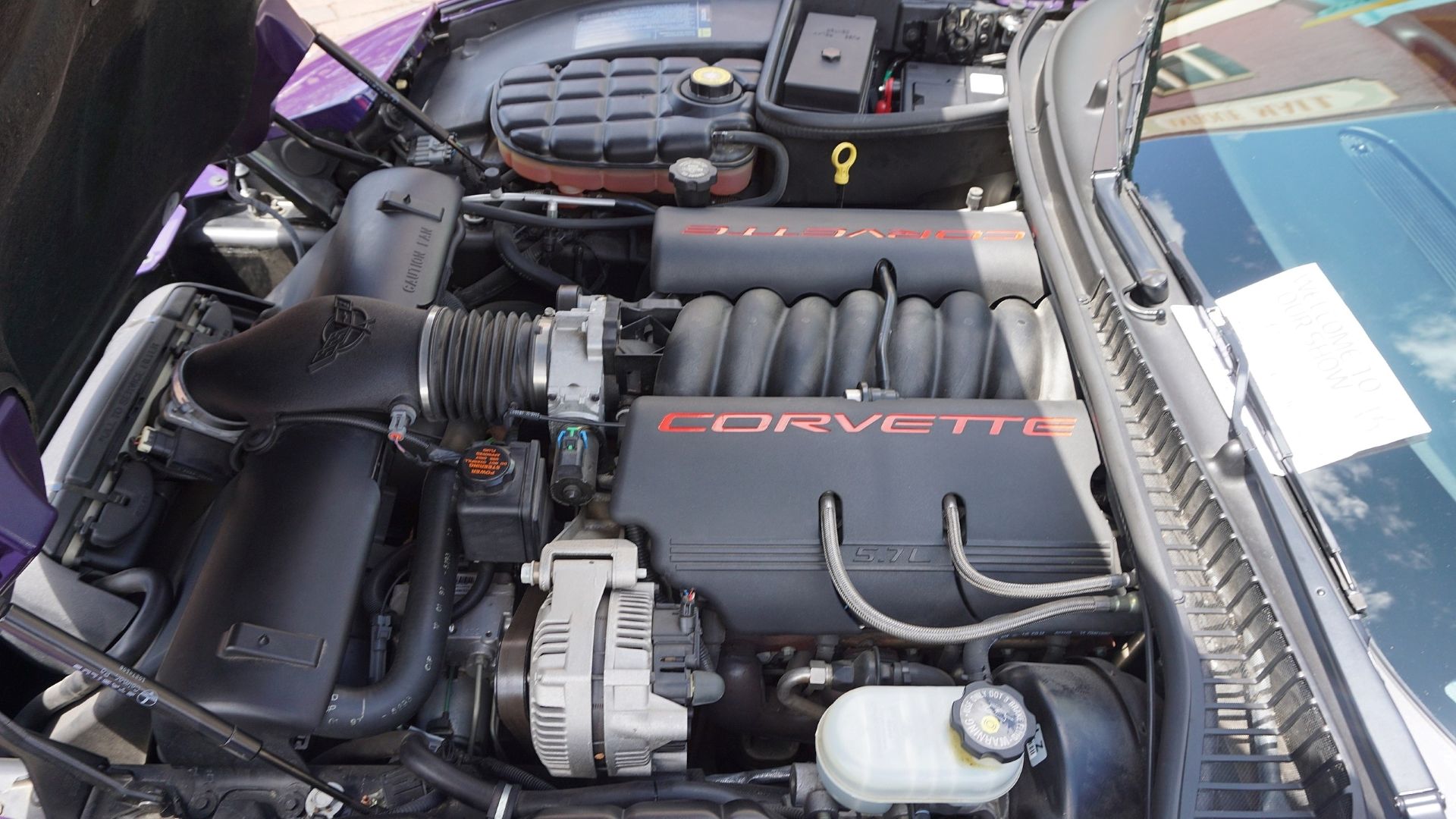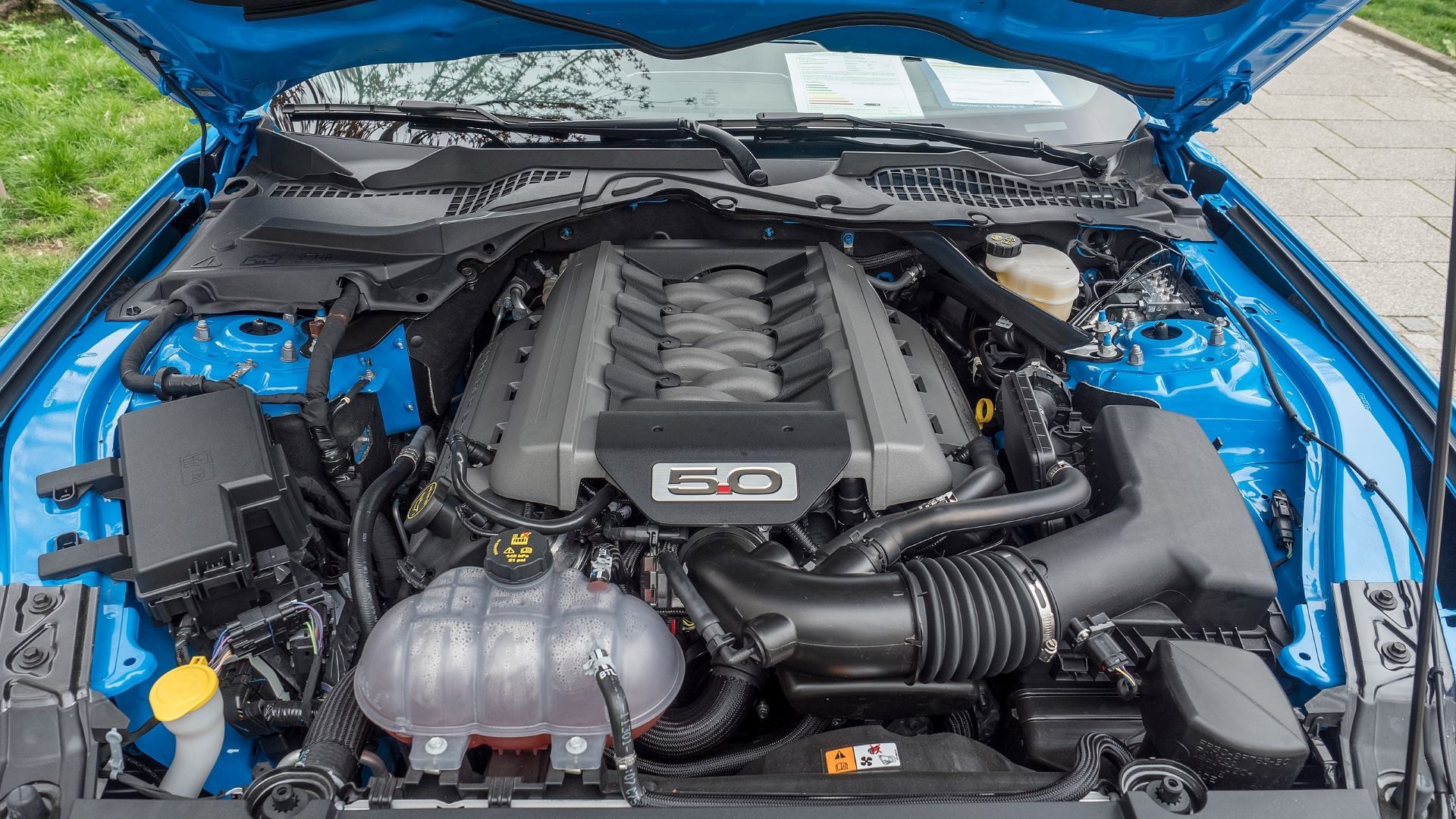At the heart of the automotive world, a rumbling that echoes power, heritage, and innovation rings out in the form of the American-made V-8 engine. Revered by enthusiasts who hold the format close to their hearts, the V-8 stands as a stalwart icon of American prowess and unadulterated muscle.
Delving all the way back as early as the mid-1930s when Henry Ford’s first V-8 ignited the passion of a nation, we look at how the automotive landscape has been molded by this engine. Since then a plethora of V-8 engines have flooded the market, with their own distinctive growl and rumble mirroring the spirit of the nation. These engines have not only sat at the heart of some of the most iconic cars throughout history, but they have helped develop a culture of speed, power, and freedom.
The diversity of American V-8 engines is as rich as the country itself. Their inception spawned legendary battles between American automakers that still rage on today. In the shadow of electrification, we take a look back at some of the best and most impressive American V-8 engines and how they helped build generations of car enthusiasts.
This list of the 10 best American V-8 engines was put together using EngineSpecs and various manufacturers' press releases.
10 Ford Flathead
The Ford Flathead V-8 is essentially the grandfather to all American V-8 engines. All the way back in 1932, it was Ford who first began the V-8 movement. While the engine layout had existed well before Henry Ford shot at it, Ford was distinct in that it made the eight-cylinder affordable to the masses.
Engine Specs
| Manufacturer | Ford |
| Production Years | 1932 - 1953 |
| Configuration | Side-Valve V-8 |
| Displacement | 3.6 - 5.5 Liters (221 - 337 cu in) |
| Power | 65 - 125 HP |
| Torque | 144 - 218 lb-ft |
| Fuel | Gasoline |
| Noteworthy Application | Hot Rodding |
While the Flathead isn’t exactly the most powerful or efficient unit, especially by modern standards, its strength was its simplicity. Not only was it incredibly easy to work on, but it was an extremely reliable engine for the time. It was so iconic that the first car it sat in, the Model 18, was simply known by most as the Ford V-8.
9 Buick Nailhead V8
While this engine was called the Fireball V-8 by Buick, its more popular name is the Nailhead. Enthusiasts gave it this name due to the unusual vertical alignment of its small-sized valves which made them look like nails.
Engine Specs
| Manufacturer | Buick/General Motors |
| Production Years | 1953 - 1966 |
| Configuration | 90° V8 |
| Displacement | 3.5 - 7.5 Liters (215.3 - 455 cu in) |
| Power | 150 - 360 HP |
| Torque | 220 - 510 lb-ft |
| Fuel | Gasoline |
| Noteworthy Application | Buick Wildcat, Buick Riviera, SR-71 Blackbird, |
The engineering of this engine meant that it output more than one pound-foot of torque per cubic inch, which was absolutely phenomenal for the time. This engine powered some of the most important Buick muscle cars of the era and helped them develop their brand in the 50s and 60s. It was even used as a starter motor for the SR-71 Blackbird supersonic jet.
8 Buick Small Block 215
In 1961, Buick developed a new small V-8 that would come to power Oldsmobiles and Pontiacs but would never sit in the heart of a great American muscle car. So why is it so special you ask? Well after General Motors had finished with the engine, they sold everything to do with it to the British automotive company Rover.
Engine Specs
| Manufacturer | Buick/Rover |
| Production Years | 1960 - 1963 (Buick) 1967 - 2006 (Rover) |
| Configuration | 90° V8 |
| Displacement | 3.5 - 5.0 Liters (215.3 - 304.9 cu in) |
| Power | 155 - 340 HP |
| Torque | 220 - 350 lb-ft |
| Fuel | Gasoline |
| Noteworthy Application | Oldsmobile F-85, Pontiac Tempest (Buick) Range Rover, Triumph TR8, TVR Griffith (Rover) |
While Buick never had much with their engine, Rover turned it into one of the longest-lasting production runs of an engine ever. It may not have seen its full potential under Buick but it is still an all-American engine that sat at the heart of some of the most important British vehicles in history.
7 Ford Windsor 5.0
After Ford tasted success with their initial V-8, they never stopped chasing glory. They were hooked on the configuration and continued updating their offerings. In 1961 they came out with the first in the Windsor family. The first of the 5.0-liter mills arrived later in 1968 to fulfill the regulations of the Trans Am racing series, in which five liters was the maximum displacement.
Engine Specs
| Manufacturer | Ford |
| Production Years | 1961 - 2000 |
| Configuration | 90° V8 |
| Displacement | 4.9 Liters (302 cu in) |
| Power | 130 - 205 HP |
| Torque | 233 - 270 lb-ft |
| Fuel | Gasoline |
| Noteworthy Application | Ford GT40, Shelby GT350 |
This engine was housed in some of the most legendary Ford cars throughout history. It didn’t take long for this powerhouse to catch on and quickly become the new favorite of enthusiasts.
6 Chrysler 426 HEMI
After a short hiatus by Chrysler, the HEMI made a comeback in 1964 in the 426. HEMI refers to the shape of the combustion chamber which is hemispherical. The late 60s signified the middle of the horsepower wars, a tough battle to see who could produce the most power, in which Chrysler’s 426 sat as the benchmark.
Engine Specs
| Manufacturer | Chrysler |
| Production Years | 1964 - 1971 |
| Configuration | Naturally Aspirated V-8 |
| Displacement | 7.0 Liters (426 cu in) |
| Power | 425 HP |
| Torque | 490 lb-ft |
| Fuel | Gasoline |
| Noteworthy Application | Dodge Charger, Dodge Super Bee, Dodge Challenger, Plymouth Superbird |
The 426 refers to the engine’s displacement which was 426 cubic inches. Originally the 426 was mainly developed to power their cars in NASCAR, however, the powertrain quickly became more popular than expected and Chrysler extended the powertrain to the public.
5 Chevrolet L88 427
The big-block Chevy 427 was extremely successful due to its versatility and its robust nature. The L88 model of the engine was used from 1967 to 1969 and was essentially a racing engine that fit inside production vehicles. It was most notoriously used in the Corvette and helped the Chevy gain its legendary status.
Engine Specs
| Manufacturer | General Motors |
| Production Years | 1967 to 1969 |
| Configuration | Naturally aspirated 90° V8 |
| Displacement | 7.0 Liters (427 cu in) |
| Power | 430 HP |
| Torque | 460 lb-ft |
| Fuel | Gasoline |
| Noteworthy Application | Chevrolet Corvette C2 / C3 |
While engines that output this kind of horsepower are fairly commonplace in the modern world, achieving a rating of 430 horsepower all the way back in the 60s was an incredible achievement.
4 Pontiac 455 Super Duty
The largest engine ever produced by Pontiac was in 1970 when they released the 455 V-8. A high-output 455 was released in 1971. The 70s saw a complete shift in the way engines were built due to shifting emissions laws, Pontiac was the last standing and held out with the detuned Super Duty 455 all the way until 1976.
Engine Specs
| Manufacturer | Pontiac/General Motors |
| Production Years | 1973 - 1976 |
| Configuration | 90° V8 |
| Displacement | 7.5 Liters (456.12 cu in) |
| Power | 290 - 370 HP |
| Torque | 390 - 500 lb-ft |
| Fuel | Gasoline |
| Noteworthy Application | Pontiac Firebird, Pontiac Trans Am, Pontiac Formula |
Whilst the 455 Super Duty was not Pontiac’s most powerful 455, it produced an insane 500 pound-feet of torque. This engine represents Pontiac’s last stand against regulations which aimed to get rid of big block engines and would ultimately lead to a hiatus for muscle cars in general.
3 Ford Modular 4.6
Modular refers to Ford’s approach to tooling and production at their production plants. Something that the 4.6 features that are fairly rare, even among modern muscle cars, is the overhead cams, with loads of manufacturers still utilizing push-rod technology.
Engine Specs
| Manufacturer | Ford |
| Production Years | 1991 - 2014 |
| Configuration | 90° V8 |
| Displacement | 4.6 Liters (280.8 cu in) |
| Power | 190 - 390 HP |
| Torque | 260 - 452 lb-ft |
| Fuel | Gasoline |
| Noteworthy Application | Ford Crown Victoria, Ford Mustang GT, Licoln Town Car, Koenigsegg CC8S, Koenigsegg CCR |
There were versions of the 4.6 that utilized either two, three, or four valves per cylinder, using either a SOHC or DOHC setup depending on the version. The 4.6 modular engine is incredibly robust and has proven its reliability.
2 Chevrolet LS1
Based on the architecture of the Chevrolet small block engine, the LS1 was built from the ground up. Its most notable application was also its first, in the Chevrolet Corvette C5. This was Chevrolet’s big re-entry into the world of high-horsepower cars as they had tapered off slightly back in the late 60s.
Engine Specs
| Manufacturer | General Motors |
| Production Years | 1997 - 2004 |
| Configuration | 90° V8 |
| Displacement | 4.6 Liters (280.8 cu in) |
| Power | 305 - 350 HP |
| Torque | 335 - 365 lb-ft |
| Fuel | Gasoline |
| Noteworthy Application | Chevrolet Corvette C5, Pontiac Firebird, Chevrolet Camaro |
This is possibly the most well-known engine in popular culture, with the meme being that if you want to get power out of a car you should just LS swap it. The Chevrolet LS1 has been dropped into anything from a Mazda Miata to a Porsche 911.
1 Ford 5.0 L Coyote
One of Ford’s most popular engine designs was their modular engines. These were a series of V-8 and V-10 engines that people had come to love. Despite being classified as part of the modular engines, the 5.0 Liter Coyote engine was an all-new design and differed heavily from the rest of the lineup.
Engine Specs
| Manufacturer | Ford |
| Production Years | 2011 - Present |
| Configuration | 90° V8 |
| Displacement | 5.0 Liters (302.1 cu in) |
| Power | 360 - 480 HP |
| Torque | 380 - 420 lb-ft |
| Fuel | Gasoline |
| Noteworthy Application | Ford F-150, Ford Mustang, Ford Falcon, TVR Griffith |
The Ford Coyote featured Twin Independent Variable Cam Timing and an extremely high compression ratio. The developments Ford made in the Coyote in terms of power and efficiency have influenced its engineering for years up to the present.











